
Ready To Act



Tackling climate change requires global collaboration. As a UK-US sustainable energy company, with communities on both sides of the Atlantic, we at Drax are keenly aware of the need for thinking that transcends countries and borders.
Joe Biden has become the 46th President of my native country at a crucial time to ensure there is global leadership and collaboration on climate change. Starting with re-joining the Paris Agreement, I am confident that the new administration can make a significant difference to this once-in-a-lifetime challenge.
This is why Drax and our partners are mobilising a transatlantic coalition of negative emissions producers. This can foster collaboration and shared learning between the different technologies and techniques for carbon removal that are essential to decarbonise the global economy.
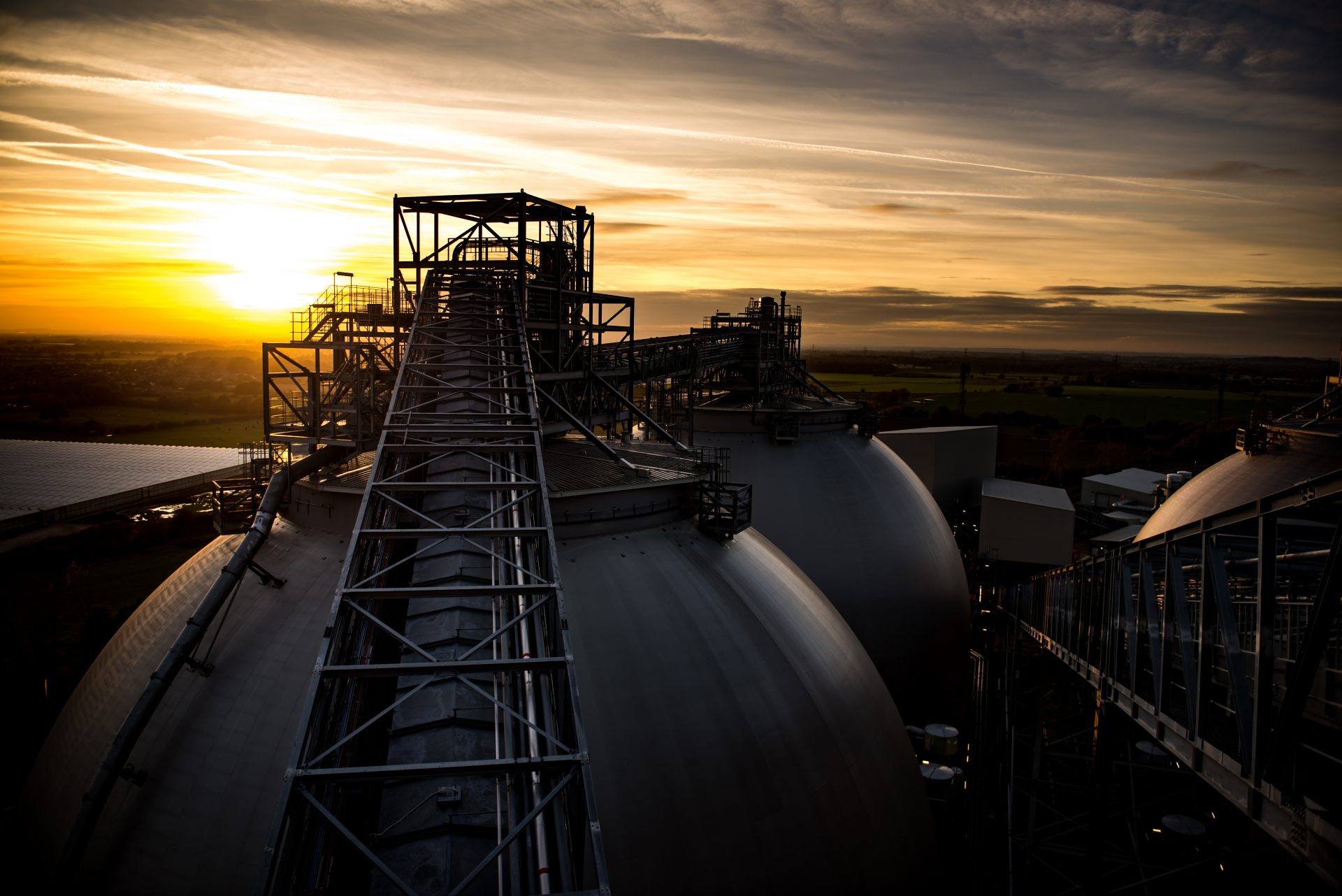
Biomass storage domes at Drax Power Station in North Yorkshire
Whilst political and technical challenges lie ahead, clear long-term policies that spur collaboration, drive innovation and enable technologies at scale are essential in achieving the UK and US’ aligned targets of reaching net zero carbon emissions by 2050.
What makes climate change so difficult to tackle is that it requires collaboration from many different parties on a scale like few other projects. This is why the Paris Agreement and this year’s COP26 conference in Glasgow are so vital.
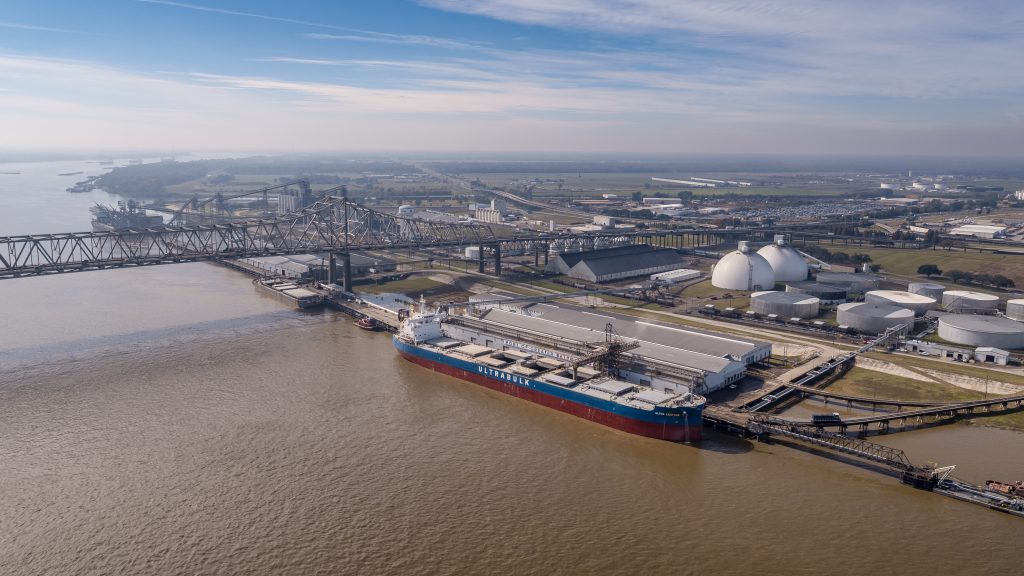
Sustainable biomass wood pellets being safely loaded at the Port of Greater Baton Rouge onto a vessel destined for Drax Power Station
Our effort towards delivering negative emissions using bioenergy with carbon capture and storage (BECCS) is another example of ambitious decarbonisation that is most impactful as part of an integrated, collaborative energy system. The technology depends upon sustainable forest management in regions, such as the US South where our American communities operate. Carbon capture using sustainable bioenergy will help Drax to be carbon negative by 2030 – an ambition I announced at COP25, just over a year ago in Madrid.
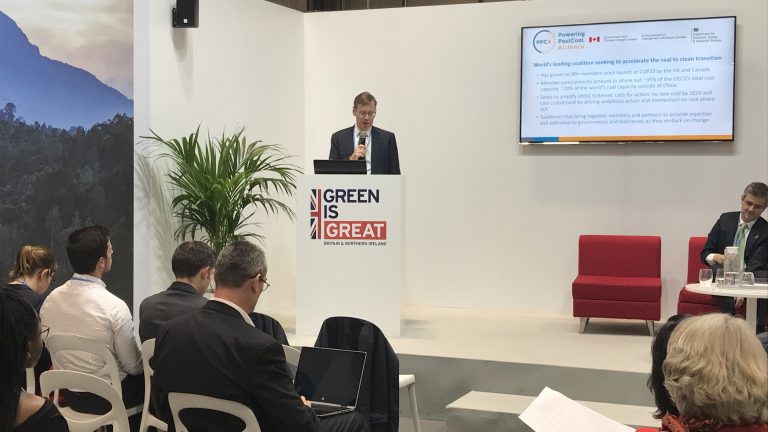
Will Gardiner announcing Drax’s carbon negative ambition at COP25 in Madrid (December 2019).
Experts on both sides of the Atlantic consider BECCS essential for net zero. The UK’s Climate Change Committee says it will play a major role in tackling carbon dioxide (CO2) emissions that will remain in the UK economy after 2050, from industries such as aviation and agriculture that will be difficult to fully decarbonise. Meanwhile, a report published last year by New York’s Columbia University revealed that rapid development of BECCS is needed within the next 10 years in order to curb climate change.
A variety of negative emissions technologies are required to capture between 10% and 20% of the 35 billion metric tonnes of carbon produced annually that the International Energy Agency says is needed to prevent the worst effects of climate change.
We believe that sharing our experience and expertise in areas such as forestry, bioenergy, and carbon capture will be crucial in helping more countries, industries and businesses deploy a range of technologies.
A formal coalition of negative emissions producers that brings together approaches including land management, afforestation and reforestation, as well as technical solutions like direct air capture (DAC), as well as BECCS, would offer an avenue to ensure knowledge is shared globally.
It would also offer flexibility in countries’ paths to net zero emissions. If one approach under-delivers, other technologies can work together to compensate and meet CO2 removal targets.
As with renewable energy, working in partnership with governments is essential to develop these innovations into the cost-effective, large scale solutions needed to meet climate targets in the mid-century.
I agree whole heartedly that a nation’s economy and environment are intrinsically linked – something many leaders are now saying, including President Biden. The recently approved US economic stimulus bill, supported by both Republicans and Democrats in Congress and which allocates $35 billion for new clean energy initiatives, is a positive step for climate technology and job creation.
Globally as many as 65 million well-paid jobs could be created through investment in clean energy systems. In the UK, BECCS and negative emissions are not just essential in preventing the impact of climate change, but are also a vital economic force as the world begins to recover from the effects of COVID-19.
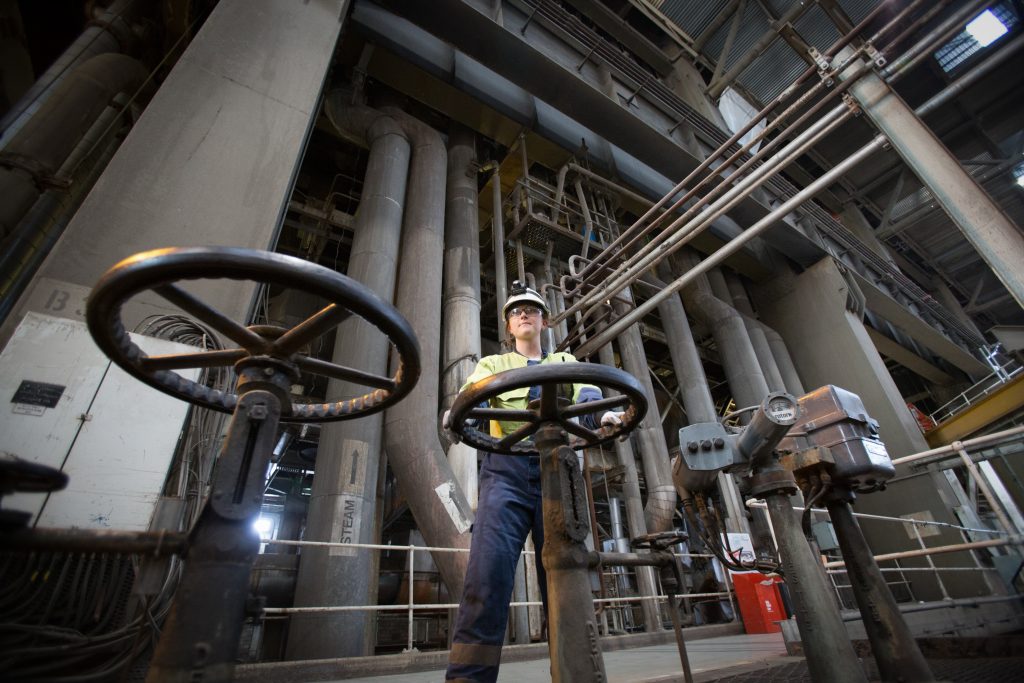
Engineer inside the turbine hall of Drax Power Station
Government and private investments in clean energy technologies can create thousands of well-paid jobs, new careers, education opportunities and upskill workforces. Developing BECCS at Drax Power Station, for example, would support around 17,000 jobs during the peak of construction in 2028, including roles in construction, local supply chains and the wider economy.
Additional jobs would be supported and created throughout our international supply chain. This includes the rail, shipping and forestry industries that are integral to rural communities in the US South.
We are also partnered with 11 other organisations in the UK’s Humber region to develop a carbon capture, usage and storage (CCUS) and hydrogen industrial cluster with the potential to spearhead creating and supporting more than 200,000 jobs around the UK in 2039.
The expertise and equipment needed for such a project can be shared, traded and exported to other industrial clusters around the world, allowing us to help reach global climate goals and drive global standards for CCUS and biomass sustainability.
Clear, long-term policies are essential here, not just to help develop technology but to mitigate risk and encourage investment. These are the next crucial steps needed to deploy negative emissions at the scale required to impact CO2 emissions and lives of people.
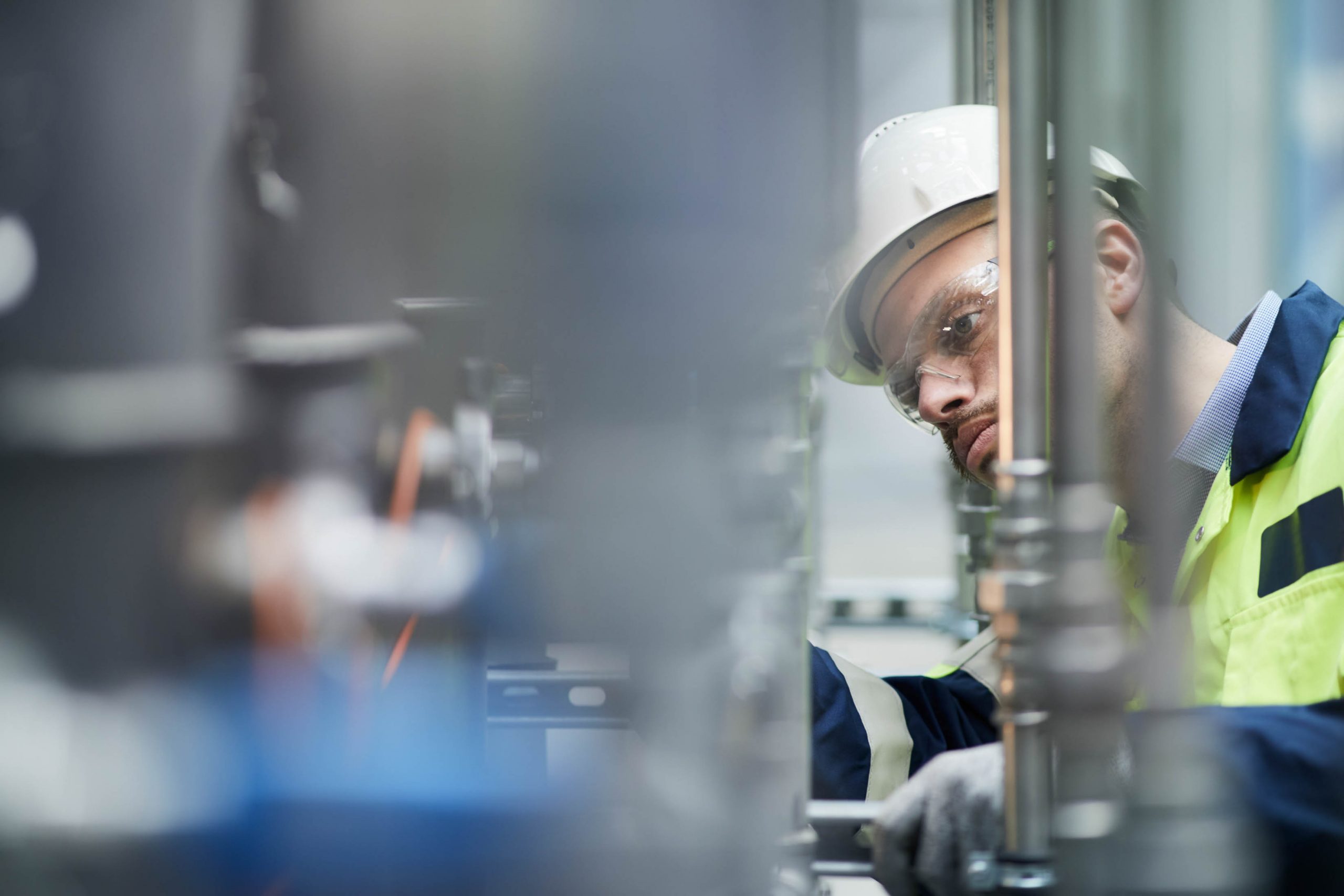
Engineer at BECCS pilot project within Drax Power Station
At Drax we directly employ almost 3,000 people in the US and UK, and indirectly support thousands of families through our supply chains on both sides of the Atlantic. Drax Power Station is the most advanced BECCS project in the world and we stand ready to invest in this cutting-edge carbon capture and removal technology. We can then share our expertise with the United States and the rest of the world – a world where major economies are committing to a net zero future and benefiting from a green economic recovery.
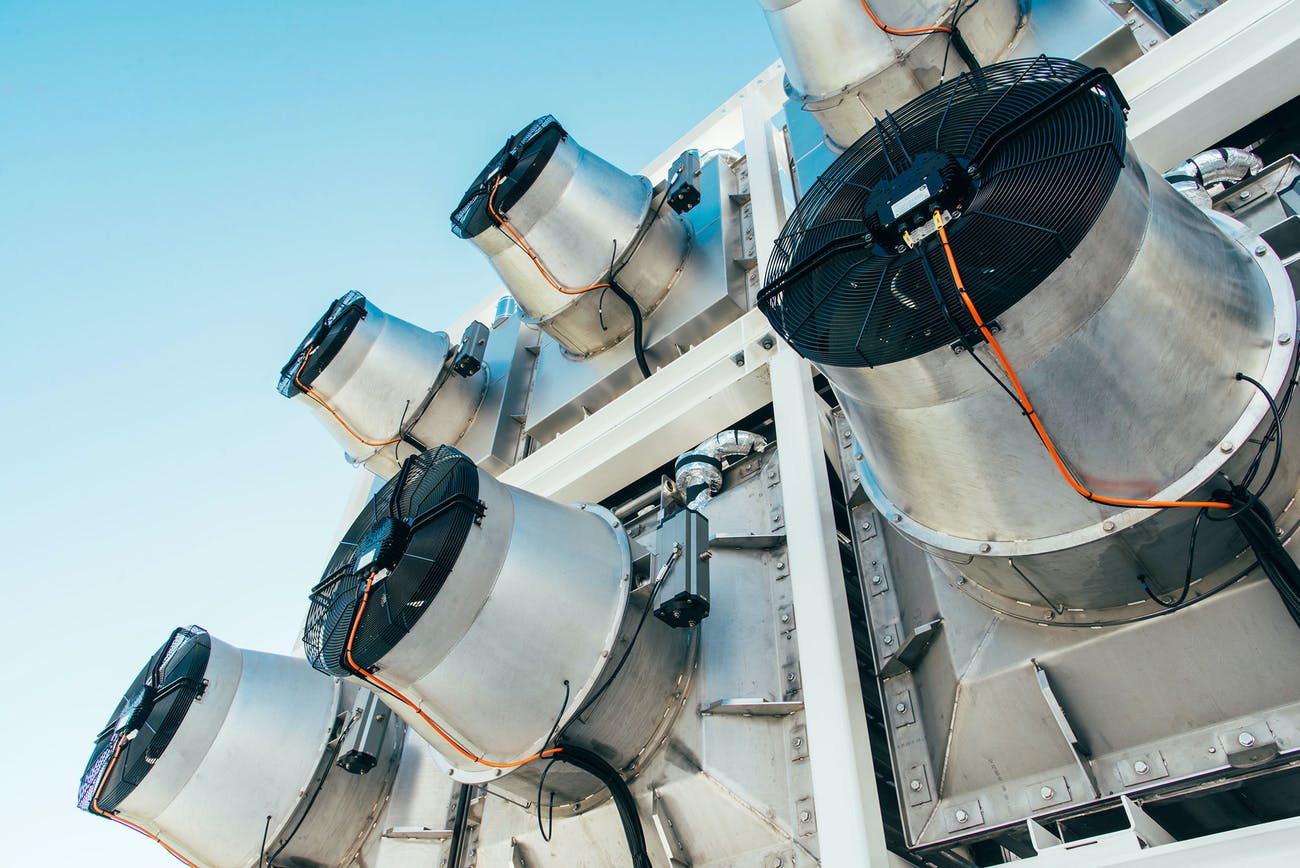
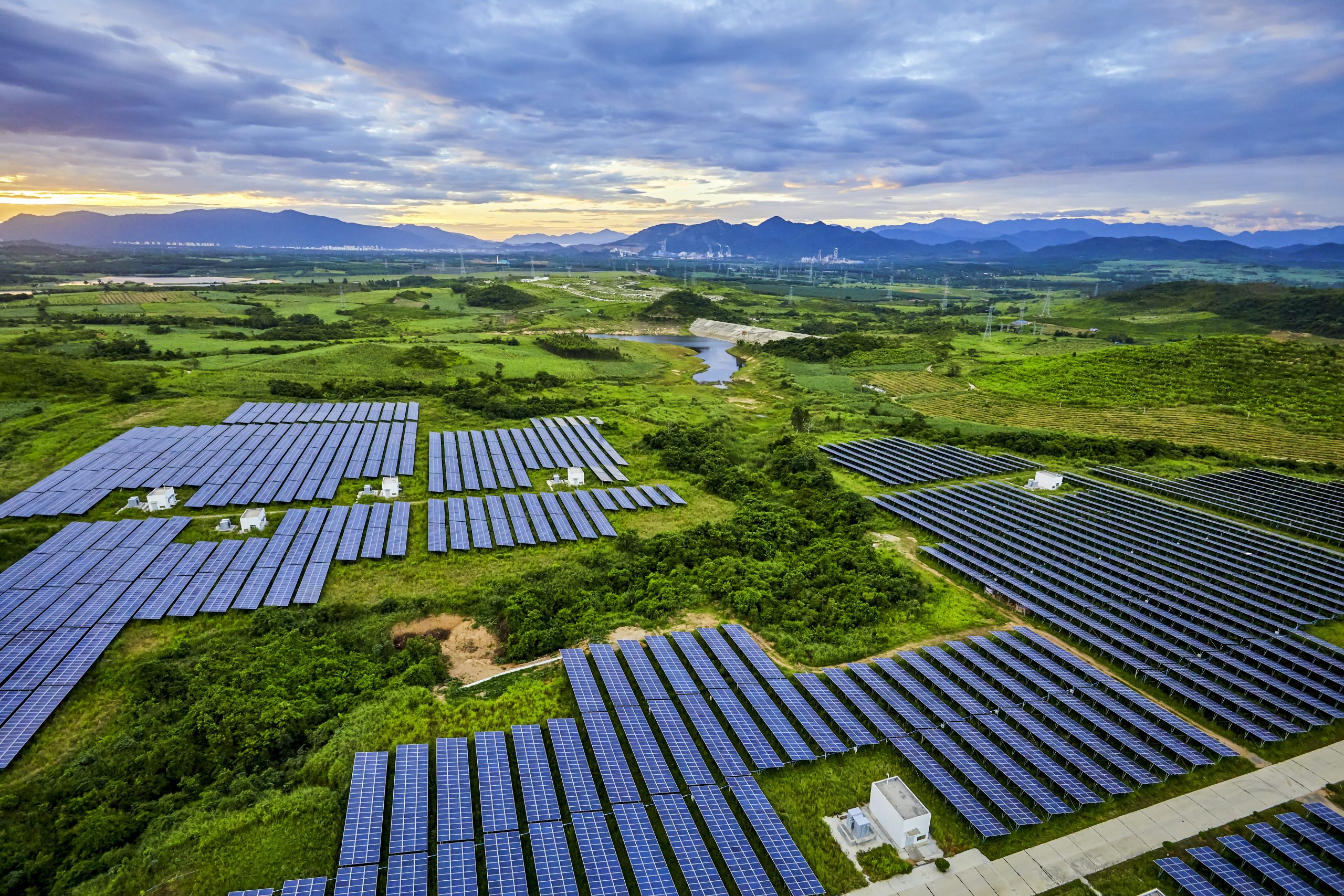
Dear Prime Minister, Chancellor, COP26 President and Minister for Energy and Clean Growth,
We are a group of energy companies investing tens of billions in the coming decade, deploying the low carbon infrastructure the UK will need to get to net zero and drive a green recovery to the COVID-19 crisis.
We welcome the leadership shown on the Ten Point Plan for a Green Industrial Revolution, and the detailed work going on across government to deliver a net zero economy by 2050. We are writing to you to call on the Government to signal what this will mean for UK electricity decarbonisation by committing to a date for a net zero power system.
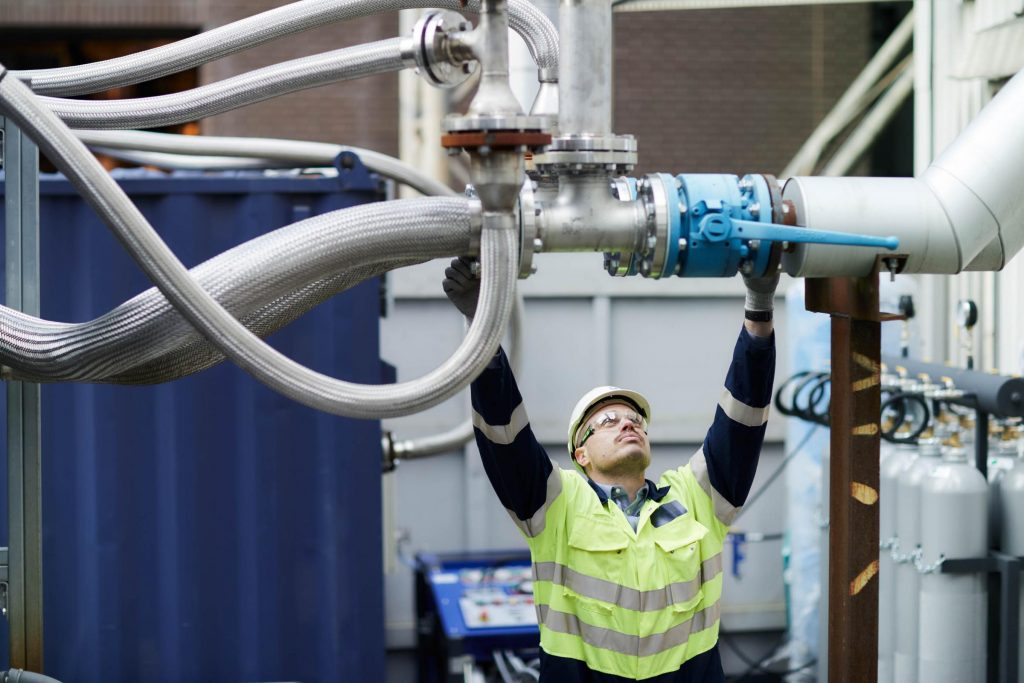
Head of BECCS Carl Clayton inspects pipes at the CCUS Incubation Area, Drax Power Station
The electricity sector will be the backbone of our net zero economy, and there will be ever increasing periods where Great Britain is powered by only zero carbon generation. To support this, the Electricity System Operator is putting in place the systems, products and services to enable periods of zero emissions electricity system operation by 2025.
Achieving a net zero power system will require government to continue its efforts in key policy areas such as carbon pricing, which has been central in delivering UK leadership in the move away from coal and has led to UK electricity emissions falling by over 63% between 2012 and 2019 alone.
It is thanks to successive governments’ commitment to robust carbon pricing that the UK is now using levels of coal in power generation last seen 250 years ago – before the birth of the steam locomotive. A consistent, robust carbon price has also unlocked long term investment low-carbon power generation such that power generated by renewables overtook fossil fuel power generation for the first time in British history in the first quarter of 2020.
Yet, even with the demise of coal and the progress in offshore wind, more needs to be done to drive the remaining emissions from electricity as its use is extended across the economy.
In the near-term, in combination with other policies, continued robust carbon pricing on electricity will incentivise the continued deployment of low carbon generation, market dispatch of upcoming gas-fired generation with Carbon Capture and Storage (CCS) projects and the blending of low carbon hydrogen with gas-fired generation. Further forward, a robust carbon price can incentivise 100% hydrogen use in gas-fired generation, and importantly drive negative emissions to facilitate the delivery of a net zero economy.
Next year, the world’s attention will focus on Glasgow and negotiations crucial to achieving our climate change targets, with important commitments already made by China, the EU, Japan and South Korea amongst others. An ambitious 2030 target from the UK will help kickstart the Sprint to Glasgow ahead of the UK-UN Climate Summit on 12 December.

Electricity cables and pylon snaking around a mountain near Cruachan Power Station, Drax’s flexible pumped storage facility in the Highlands
2030 ambition is clearly needed, but to deliver on net zero, deep decarbonisation will be required. Previous commitments from the UK on its coal phase out and being the first major economy to adopt a net zero target continue to encourage similar international actions. To build on these and continue UK leadership on electricity sector decarbonisation, we call on the UK to commit to a date for a net zero power system ahead of COP26, to match the commitment of the US President-elect’s Clean Energy Plan. To ensure the maximum benefit at lowest cost, the chosen date should be informed by analysis and consider broad stakeholder input.
Alongside near-term stability as the UK’s carbon pricing future is determined, to meet this commitment Government should launch a consultation on a date for a net zero power system by the Budget next year, with a target date to be confirmed in the UK’s upcoming Net Zero Strategy. This commitment would send a signal to the rest of the world that the UK intends to maintain its leadership position on climate and to build a greener, more resilient economy.
To:
Signatories:
BP, Drax, National Grid ESO, Sembcorp, Shell and SSE
View/download letter in PDF format

To tackle the climate crisis, global unity and collaboration are needed. This was in part the thinking behind the Paris Agreement. It set a clear, collective target negotiated at the 2015 United Nations Climate Change Conference and signed the following year: to keep the increase in global average temperatures to well below 2 degrees Celsius above pre-industrial levels.
In November 2021, COP26 will see many of the countries who first signed the Paris Agreement come together in Glasgow for the first ‘global stocktake’ of their environmental progress since its creation.
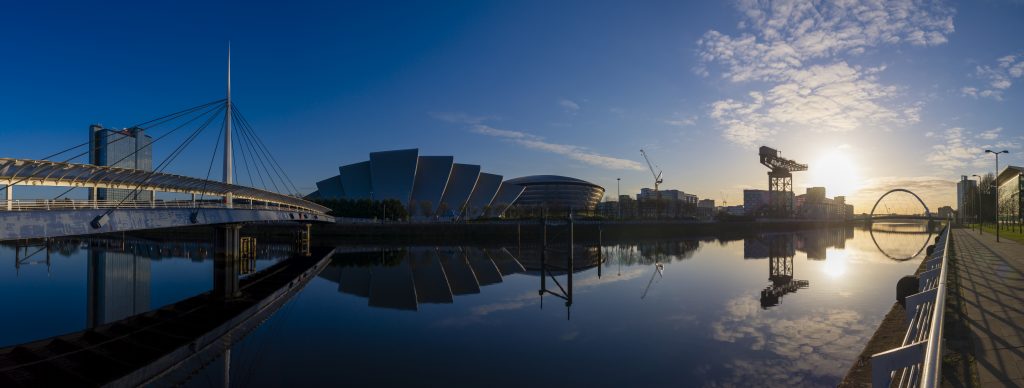
COP26 will take place at the SEC in Glasgow
Already delayed for a year as a result of the pandemic, COVID-19 and its effects on emissions is likely to be a key talking point. So too will progress towards not just the Paris Agreement goals but those of individual countries. Known as ‘National Determined Contributions’ (NDCs), these sit under the umbrella of the Paris Agreement goals and set out individual targets for individual countries.
With many countries still reeling from the effects of COVID-19, the question is: which countries are actually on track to meet them?
The NDCs of each country represent its efforts and goals to reduce national emissions and adapt to the impacts of climate change. These incorporate various targets, from decarbonisation and forestry to coastal preservation and financial aims.
While all countries need to reduce emissions to meet the Paris Agreement targets, not all have an equally sized task. The principle of differentiated responsibility acknowledges that countries have varying levels of emissions, capabilities and economic conditions.
The Universal Ecological Fund outlined the emissions breakdown of the top four emitters, showing that combined, they account for 56% of global greenhouse gas emissions. China is the largest emitter, responsible for 26.8%, followed by the US which contributes 13.1%. The European Union and its 28 member states account for nine per cent, while India is responsible for seven per cent of all emissions.
These nations have ambitious emissions goals, but are they on track to meet them?

Traffic jams in the rush hour in Shanghai Downtown, contribute to high emissions in China.
By 2030, China pledged to reach peak carbon dioxide (CO2), increase its non-fossil fuel share of energy supply to 20% and reduce the carbon intensity – the ratio between emissions of CO2 to the output of the economy – by 60% to 65% below 2005 levels.
COVID-19 has increased the uncertainty of the course of China’s emissions. Some projections show that emissions are likely to grow in the short term, before peaking and levelling out sometime between 2021 and 2025. However, according to the Climate Action Tracker it is also possible that China’s emissions have already peaked – specifically in 2019. China is expected to meet its non-fossil energy supply and carbon intensity pledges.
The forecast for the second largest emitter, the US, has also been affected by the pandemic. Economic firm Rhodium Group has predicted that the US could see its emissions drop between 20% and 27% by 2025, meeting its target of reducing emissions by 26% to 28% below 2005 levels.
However, President Trump’s rolling back of Obama-era climate policies and regulations, his support of fossil fuels and withdrawal from the Paris Agreement (effective from as early as 4 November 2020), suggest any achievement may not be long-lasting.
The United States’ Coronavirus Aid, Relief, and Economic Security Act, known as the CARES Act, does not include any direct support to clean energy development – something that could also change in 2021.
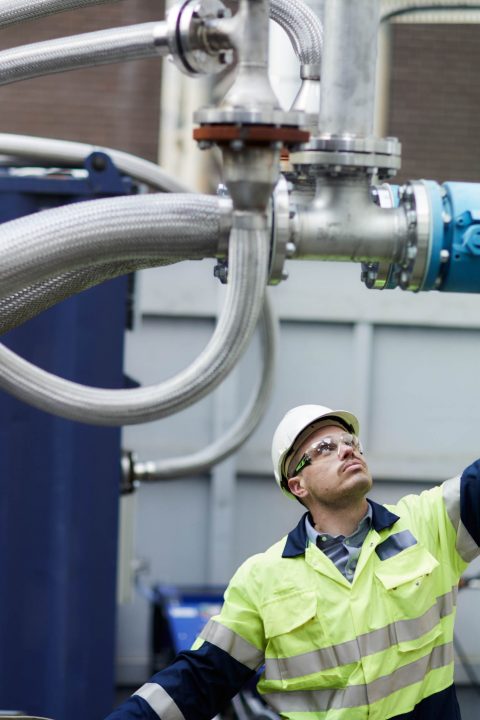
Carl Clayton, Head of BECCS at Drax, inspects pipework in the CCUS area of Drax Power Station
The European Union and its member states, then including the UK, pledged to reduce emissions by at least 40% below 1990 levels by 2030 – a target the Climate Action Tracker estimates will be achieved. In fact, the EU is on track to cut emissions by 58% by 2030.
This progress is in part a result of a large package of measures adopted in 2018. These accelerated the emissions reductions, including national coal phase-out plans, increasing renewable energy and energy efficiency. The package also introduced legally binding annual emission limits for each member state within which they can set individual targets to meet the common goal.
The UK has not yet released an updated, independent NDC. However, it has announced a £350 million package designed to cut emissions in heavy industry and drive economic recovery from COVID-19. This includes £139 million earmarked to scale up hydrogen production, as well as carbon capture and storage (CCS) technology, such as bioenergy with carbon capture (BECCS) – essential technologies in achieving net zero emissions by 2050 and protecting industrial regions.
India, the fourth largest global emitter, is set to meet its pledge to reduce its emissions intensity by 33% to 35% below 2005 levels and increase the non-fossil share of power generation to 40% by 2030. What’s more, the Central Electricity Agency has reported that 64% of India’s power could come from non-fossil fuel sources by 2030.
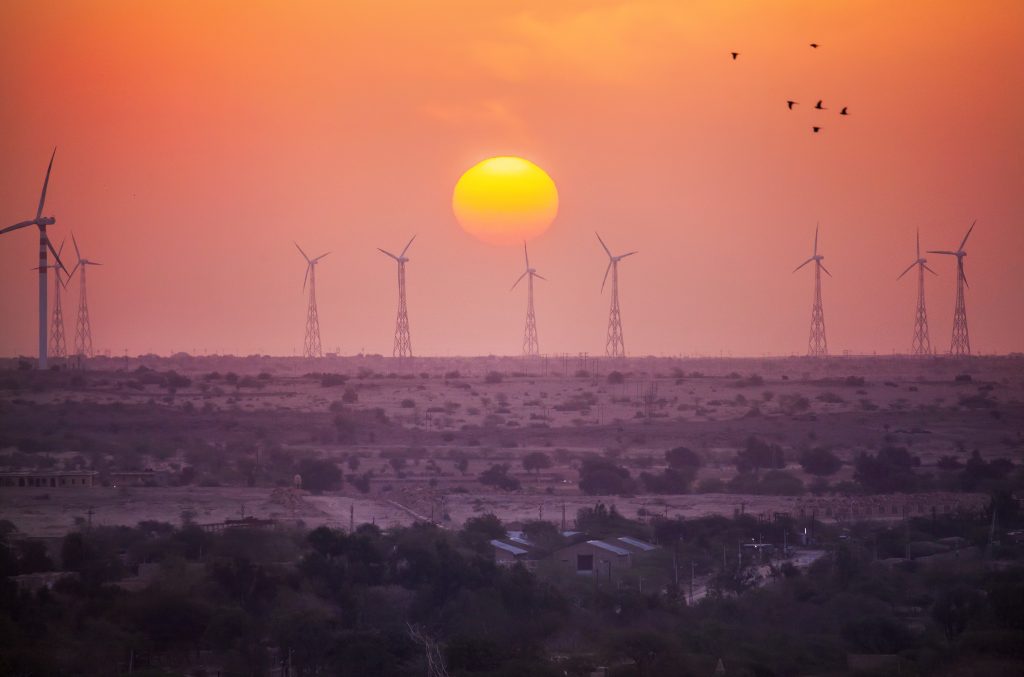
Wind turbines in Jaisalmer, Rajasthan, India
Along with increasingly renewable generation, the implementation of India’s National Smart Grid Mission aims to modernise and improve the efficiency of the country’s energy system.
It is promising that the world’s four largest emitters have plans in place and are making progress towards their decarbonisation goals. However, tackling climate change requires action from around the entire globe. In addition to NDCs, many countries have committed to, or have submitted statements of intent, to achieve net zero carbon emissions in the coming years.
| Country | Target Date | Status |
|---|---|---|
| Bhutan 🇧🇹 | Currently carbon negative (and aiming for carbon neutrality as it develops; pledged towards the Paris Agreement) | |
| Suriname 🇸🇷 | Currently carbon negative | |
| Denmark 🇩🇰 | 2050 | In law |
| France 🇫🇷 | 2050 | In law |
| Germany 🇩🇪 | 2050 | In law |
| Hungary 🇭🇺 | 2050 | In law |
| New Zealand 🇳🇿 | 2050 | In law |
| Scotland 🏴 | 2045 | In law |
| Sweden 🇸🇪 | 2045 | In law |
| United Kingdom 🇬🇧 | 2050 | In law |
| Bulgaria 🇧🇬 | 2050 | Policy Position |
| Canada 🇨🇦 | 2050 | Policy Position |
| Chile 🇨🇱 | 2050 | In policy |
| China 🇨🇳 | 2060 | Statement of intent |
| Costa Rica 🇨🇷 | 2050 | Submitted to the UN |
| EU 🇪🇺 | 2050 | Submitted to the UN |
| Fiji 🇫🇯 | 2050 | Submitted to the UN |
| Finland 🇫🇮 | 2035 | Coalition agreement |
| Iceland 🇮🇸 | 2040 | Policy Position |
| Ireland 🇮🇪 | 2050 | Coalition Agreement |
| Japan 🇯🇵 | 2050 | Policy Position |
| Marshall Islands 🇲🇭 | 2050 | Pledged towards the Paris Agreement |
| Netherlands 🇳🇱 | 2050 | Policy Position |
| Norway 🇳🇴 | 2050 in law, 2030 signal of intent | |
| Portugal 🇵🇹 | 2050 | Policy Position |
| Singapore 🇸🇬 | As soon as viable in the second half of the century | Submitted to the UN |
| Slovakia 🇸🇰 | 2050 | Policy Position |
| South Africa 🇿🇦 | 2050 | Policy Position |
| South Korea 🇰🇷 | 2050 | Policy Position |
| Spain 🇪🇸 | 2050 | Draft Law |
| Switzerland 🇨🇭 | 2050 | Policy Position |
| Uruguay 🇺🇾 | 2030 | Contribution to the Paris Agreement |
While the COVID-19 pandemic has disrupted short-term plans, many see it as an opportunity to rejuvenate economies with sustainability in mind. COP26, as well as the global climate summit planned for December of this year, will likely see many countries lay out decarbonisation goals that benefit both people’s lives and the planet.
#COP26, as well as the UK/UN climate meeting planned for this December, will likely see many countries lay out decarbonisation goals that benefit both people’s lives and the planet. #COP26countdown ⏰ #COP26Ambition 🌍
— Drax (@DraxGroup) October 30, 2020

Carbon capture and storage (CCS) is the process of trapping or collecting carbon emissions from a large-scale source – for example, a power station or factory – and then permanently storing them.
Carbon capture usage and storage (CCUS) is where captured carbon dioxide (CO2) may be used, rather than stored, in other industrial processes or even in the manufacture of consumer products.
Carbon can be captured either pre-combustion, where it is removed from fuels that emit carbon before the fuel is used, or post-combustion, where carbon is captured directly from the gases emitted once a fuel is burned.
Pre-combustion carbon capture involves solid fossil fuels being converted into a mixture of hydrogen and carbon dioxide under heat pressure. The separated CO2 is
captured and transported to be stored or used.
Post-combustion carbon capture uses the addition of other materials (such as solvents) to separate the carbon from flue gases produced as a result of the fuel being burned. The isolated carbon is then transported (normally via pipeline) to be stored permanently – usually deep underground – or used for other purposes.
Carbon capture and storage traps and removes carbon dioxide from large sources and most of that CO2 is not released into the atmosphere.
Once carbon is captured it can be stored permanently or used in a variety of different ways. For example, material including carbon nanofibres and bioplastics can be produced from captured carbon and used in products such as airplanes and bicycles, while several start-ups are developing methods of turning captured CO2 into animal feed.
Captured carbon can even assist in the large-scale production of hydrogen, which could be used as a carbon-neutral source of transport fuel or as an alternative to natural gas in power generation.

Carbon can be stored in geological reserves, commonly naturally occurring underground rock formations such as unused natural gas reservoirs, saline aquifers, or ‘unmineable’ coal beds. The process of storage is referred to as sequestration.
The underground storage process means that the carbon can integrate into the earth through mineral storage, where the gas chemically reacts with the minerals in the rock formations and forms new, solid minerals that ensure it is permanently and safely stored.
Carbon injected into a saline aquifer dissolves into the water and descends to the bottom of the aquifer in a process called dissolution storage.
According to the Global CCS Institute, over 25 million tonnes of carbon captured from the power and industrial sectors was successfully and permanently stored in 2019 across sites in the USA, Norway and Brazil.
CO2 is a greenhouse gas, which traps heat in our atmosphere, and therefore contributes to global warming. By capturing and storing carbon, it is being taken out of the atmosphere, which reduces greenhouse gas levels and helps mitigate the effects of climate change.

Decarbonisation is the term used for the process of removing or reducing the carbon dioxide (CO2) output of a country’s economy. This is usually done by decreasing the amount of CO2 emitted across the active industries within that economy.
Currently, a wide range of sectors – industrial, residential and transport – run largely on fossil fuels, which means that their energy comes from the combustion of fuels like coal, oil or gas.
The CO2 emitted from using these fuels acts as a greenhouse gas, trapping in heat and contributing to global warming. By using alternative sources of energy, industries can reduce the amount of CO2 emitted into the atmosphere and can help to slow the effects of climate change.

There are numerous greenhouse gases that contribute to global warming, however CO2 is the most prevalent. As of 2018, carbon levels are the highest they’ve been in 800,000 years.
The Paris Agreement was created to hold nations accountable in their efforts to decrease carbon emissions, with the central goal of ensuring that temperatures don’t rise 2 degrees Celsius above pre-industrial level.
With 195 current signatories, economies have begun to factor in the need for less investment in carbon, with the UK leading the G20 nations in decarbonising its economy in the 21st century.
There are numerous energy technologies that aim to reduce emissions from industries, as well as those that work towards reducing carbon emissions from the atmosphere.
Decarbonisation has had the most progress in electricity generation because of the growth of renewable sources of power, such as wind turbines, solar panels and coal-to-biomass upgrades, meaning that homes and businesses don’t have to rely on fossil fuels. Other innovations, such as using batteries and allowing homes to generate and share their own power, can also lead to higher rates of decarbonisation. As the electricity itself is made cleaner, it therefore assists electricity users themselves to become cleaner in the process.
Other approaches, such as reforestation or carbon capture and storage, help to pull existing carbon from the air, to neutralise carbon output, or in some cases, help to make electricity generation – and even entire nations – carbon negative.
Alternative power options means that homes and businesses don’t have to rely on traditional carbon fuels.
For decarbonisation to be more widely adopted as a method for combating climate change, there needs to be structural economical change, according to Deloitte Access Economics. Creating more room for decarbonisation through investing in alternative energies means that “there are a multitude of job-rich, shovel-ready, stimulus opportunities that also unlock long-term value”.

The North Sea has long shaped British trade. It’s also been instrumental in how the country is powered, historically providing an abundant source of oil and natural gas. However, this cold fringe off the North Atlantic could also play a vital role in decarbonising the UK’s economy – not because of its full oil and gas reservoirs, but thanks to its empty ones.
In an effort to limit or reduce the amount of carbon dioxide (CO2) in the atmosphere, countries around the world are rushing towards large scale carbon capture usage and storage projects (CCUS). In this process, CO2 is captured from sources, such as energy production and manufacturing, or directly removed from the air, and reused or stored permanently – for example, underground in disused oil and gas reservoirs or other suitable geological formations.
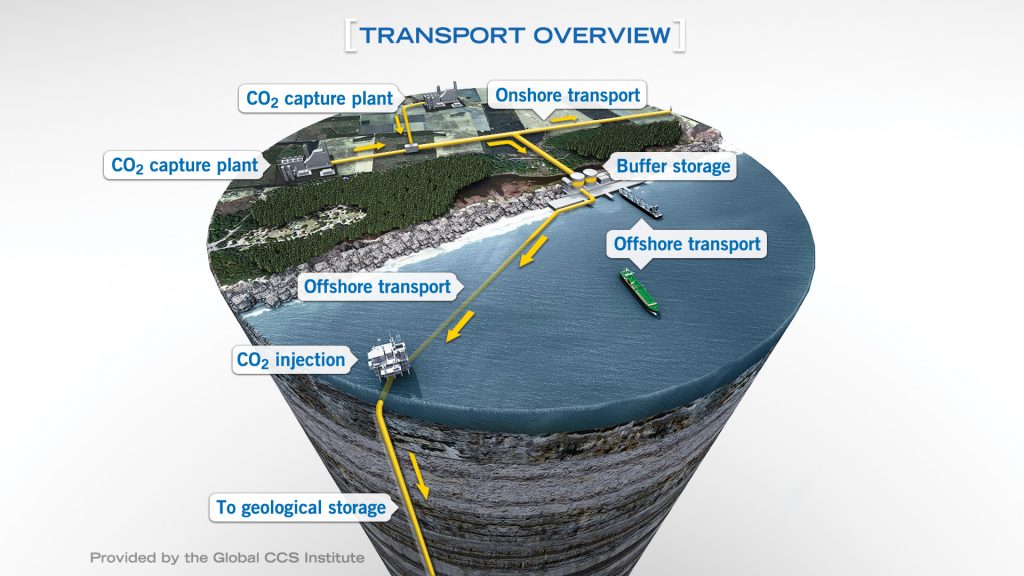
Source: CCS Image Library, Global CCS Institute [Click to view/download]
It’s clear the global capacity for CCUS must accelerate rapidly in the coming decade, but it raises the questions: where can these millions of tonnes of CO2 be stored, and what happens to it once it is?
The most well-developed approach to storing CO2 is injecting it underground into naturally occurring, porous rock formations such as former natural gas or oil reservoirs, coal beds that can’t be mined, or saline aquifers. These are deep geological formations with deposits of very salty water present in the rock’s pores and most commonly found under the ocean. The North Sea and the area off the US Gulf Coast contain several saline aquifers.
Once CO2 has been captured using CCUS technology, it’s pressurised and turned into a liquid-like form known as ‘supercritical CO2’. From there it’s transported via pipeline and injected into the rocks found in the formations deep below the earth’s surface. This is a process called geological sequestration.
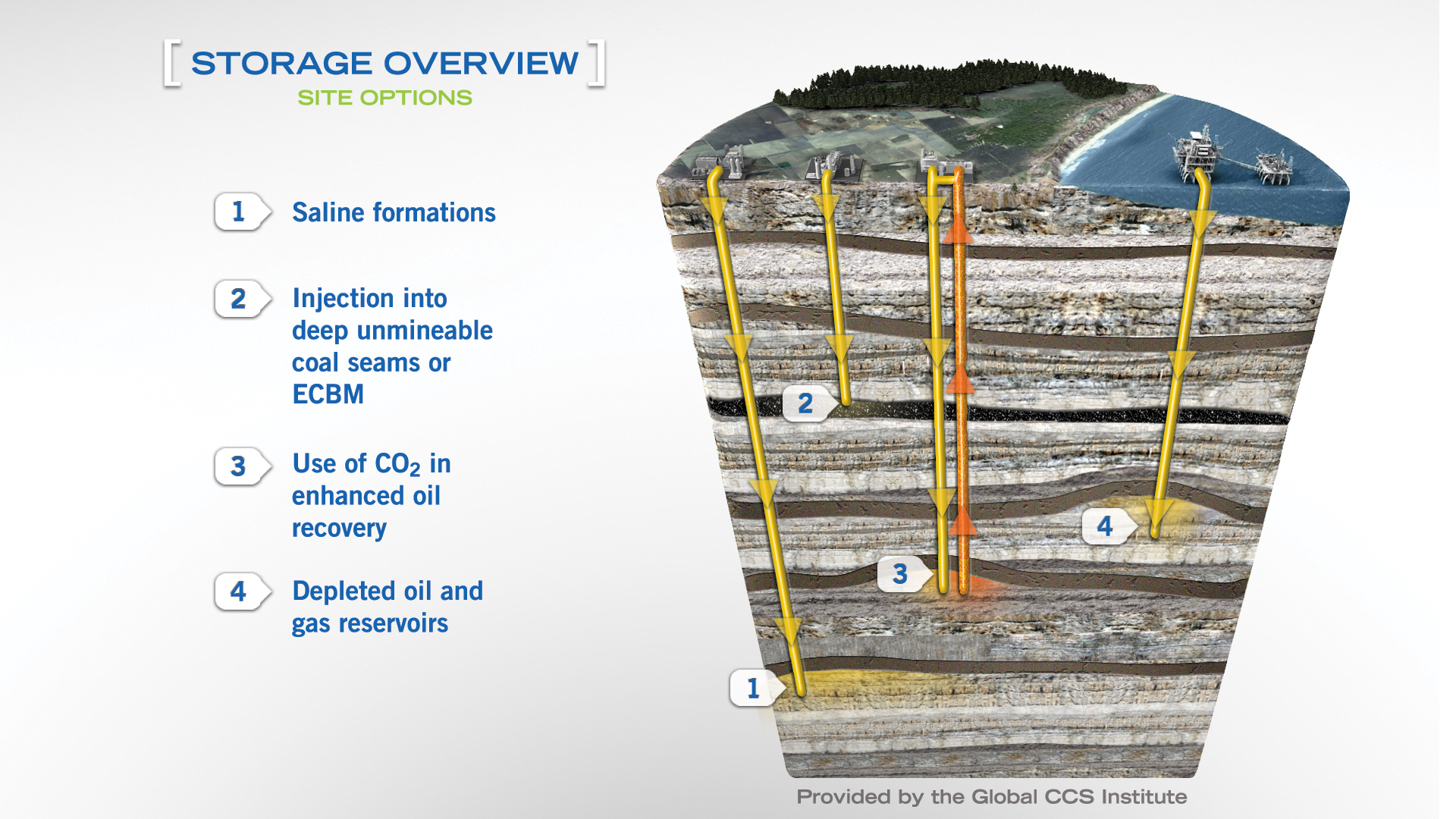
Source: CCS Image Library, Global CCS Institute [Click to view/download]
Put simply, the most straightforward way underground reservoirs store CO2 is through the solid impermeable rock that typically surrounds them. Once CO2 is injected into a reservoir, it slowly moves upwards through the reservoir until it meets this layer of impermeable rock, which acts like a lid the CO2 cannot pass through. This is what’s referred to as ‘structural storage’ and is the same mechanism that has kept oil and gas locked underground for millions of years.

White chalk stone
Over time, the CO2 trapped in reservoirs will often begin to chemically react with the minerals of the surrounding rock. The elements bind to create solid, chalky minerals, essentially locking the CO2 into the rock in a process called ‘mineral storage’.
In the case of saline aquifers, as well as structural and mineral storage, the CO2 can dissolve into the salty water in a process called ‘dissolution storage’. Here, the dissolved CO2 slowly descends to the bottom of the aquifer.
In any given reservoir, each (or all) of these processes work to store CO2 indefinitely. And while there remains some possibility of CO2 leakage from a site, research suggests it will be minimal. One study, published in the journal Nature, suggests more than 98% of injected CO2 will remain stored for over 10,000 years.
In the United States, industrial scale storage is in action in Texas, Wyoming, Oklahoma and Illinois, and there are projects in progress across the United Arab Emirates, Australia, Algeria and Canada. However, there is still a long way to go for CCUS to reach the scale it needed to limit the effects of climate change.
Research has shown that globally, there is an abundance of CO2 storage sites, which could support widespread CCUS adoption. A report compiled by researchers at Imperial College London and E4tech and published by Drax details an estimated 70 billion tonnes of storage capacity in the UK alone. The US, on the other hand, has an estimated storage capacity of 10 trillion tonnes.
It’s clear the capacity for storage is present, it now remains the task of governments and companies to ramp up CCUS projects to begin to reach the scale necessary.
In the UK, Drax Power Station is piloting bioenergy carbon capture and storage projects (BECCS), which could see it becoming the world’s first negative emissions power station. As part of the Zero Carbon Humber partnership, it could also form a part of the world’s first zero carbon industrial hub in the north of the UK.
Such projects are indicative of the big ambitions CCUS technology could realise – not just decarbonising single sites, but capturing and storing CO2 from entire industries and regions. There is still a way to go to meet that ambition, but it is clear the resources and knowledge necessary to get there are ready to be utilised.

Source: Zero Carbon Humber [Click to view/download]

Carbon capture, use and storage (CCUS) is a vital technology in the energy industry, with facilities already in place all over the world aiming to eliminate carbon dioxide (CO2) emissions.
However, for decarbonisation to go far enough to keep global warming below 2oC – as per the Paris Climate Agreement – emission reductions are needed throughout the global economy.
From cement factories to farmland, CCUS technology is beginning to be deployed in a wide variety of sectors around the world.
The global population is increasingly urban and by 2050 it’s estimated 68% of all people will live in cities. For cities to grow sustainably, it’s crucial the environmental impact of the construction industry is reduced.

Construction currently accounts for 11% of all global carbon emissions. This includes emissions from the actual construction work, such as from vehicle exhaust pipes, but a more difficult challenge is reducing embedded emissions from the production of construction materials.
Steel and concrete are emissions-heavy to make; they require intense heat and use processes that produce further emissions. Deploying widespread CCUS in the production of these two materials holds the key to drastically reducing carbon emissions from the built environment.
Steel manufacturing alone, regardless of the electricity used to power production, is responsible for about 7% of global emissions. Projects aimed at reducing the levels of carbon released in production are planned in Europe and are already in motion in the United Arab Emirates.
Abu Dhabi National Oil Company and Masdar, a renewable energy and sustainability company, formed a joint venture in 2013 with the aim of developing commercial-scale CCUS projects.
In its project with Emirates Steel, which began in 2016, about 800,000 tonnes of CO2 is captured a year from the steel manufacturing plant. This is sequestered and used in enhanced oil recovery (EOR). The commercially self-sustaining nature of this project has led to investigation into multiple future industrial-scale projects in the region.
Cement manufacturing, a process that produces as much as 8% of global greenhouse gases, is also experiencing the growth of innovative CCUS projects.

Norcem Cement plant in Brevik, Norway has already begun experimenting with CCUS, calculating that it could capture 400,000 tonnes of CO2 per year and store it under the North Sea. If the project wins government approval, Norcem could commence operations as soon as 2023.
However, as well as reducing emissions from traditional cement manufacturing and the electricity sources that power it, a team at Massachusetts Institute of Technology is exploring a new method of cement production that is more CCUS friendly.
By pre-treating the limestone used in cement creation with an electrochemical process, the CO2 produced is released in a pure, concentrated stream that can be more easily captured and sequestered underground or harnessed for products, such as fizzy drinks.
It’s hard to overstate the importance of the agriculture industry. As well as feeding the world, it employs a third of it.
Within this sector, fertiliser plays an essential role in maintaining the global food supply. However, the fertiliser production industry represents approximately 2% of global CO2 emissions.
CCUS technology can reduce the CO2 contributions made by the manufacturing of fertiliser, while maintaining crop reliability. In 2019, Oil and Gas Climate Initiative’s (OGCI) Climate Investments announced funding for what is expected to be the biggest CCUS project in the US.

Based at the Wabash Valley Resources fertiliser plant in Indiana, the project will capture between 1.3 and 1.6 million tonnes of CO2 from the ammonia producer per year. The captured carbon will then be stored 2,000 metres below ground in a saline aquifer.
Similarly, since the turn of the millennium Mitsubishi Heavy Industries Engineering has deployed CCUS technology at fertiliser plants around Asia. CO2 is captured from natural gas pre-combustion, and used to create the urea fertiliser.
However, the agriculture industry can also capture carbon in more nature-based and cheaper ways.
Soil acts as a carbon sink, capturing and locking in the carbon from plants and grasses that die and decay into it. However, intensive ploughing can damage the soil’s ability to retain CO2.
It only takes slight adjustments in farming techniques, like minimising soil disturbance, or crop and grazing rotations, to enable soil and grasslands to sequester greater levels of CO2 and even make farms carbon negative.
The transport sector is the fastest growing contributor to climate emissions, according to the World Health Organisation. Electric vehicles and hydrogen fuels are expected to serve as the driving force for much of the sector’s decarbonisation, however, at present these technologies are only really making an impact on roads. There are other essential modes of transport where CCUS has a role to play.
Climeworks, a Swiss company developing units that capture CO2 directly from the air, has begun working with Rotterdam The Hague Airport to develop a direct air capture (DAC) unit on the airport’s grounds.
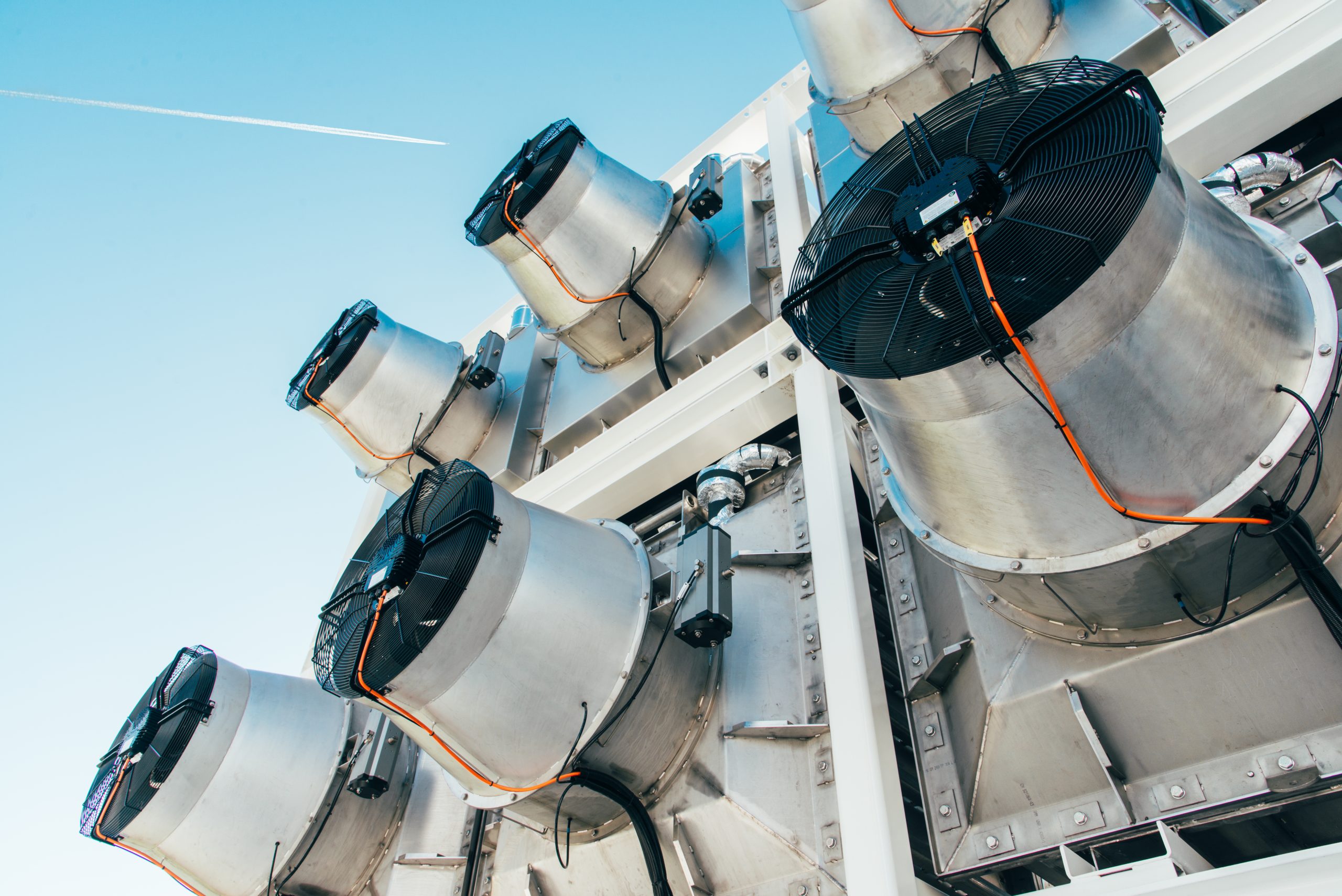
Climeworks Plant technology [Source: Climeworks Photo by Julia Dunlop]
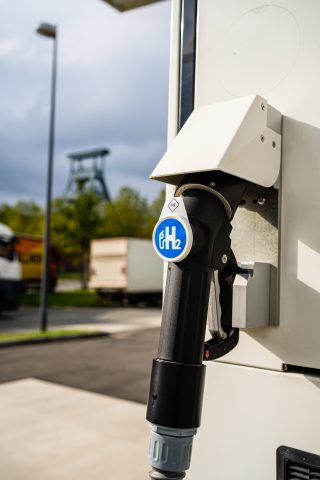
Hydrogen filling station in Hamburg, Germany.
However, beyond just capturing CO2 from planes taking off, Climeworks aims to use the CO2 to produce a synthetic jet fuel – creating a cycle of carbon reusage that ensures none is emitted into the atmosphere. A pilot project aims to create 1,000 litres of the fuel per day in 2021.
Another approach to zero-carbon transport fuel is the utilisation of hydrogen, which is already powering cars, trains, buses and even spacecraft.
Hydrogen can be produced in a number of ways, but it’s predominantly created from natural gas, through a process in which CO2 is a by-product. CCUS can play an important role here in capturing the CO2 and storing it, preventing it entering the atmosphere.
The hydrogen-powered vehicles then only emit water vapour and heat.
As CCUS technology continues to be deployed at scale and made increasingly affordable, it has the potential to go beyond just large industrial sites, to entire economic regions.
Global Thermostat is developing DAC technology which can be fitted to any factory or plant that produces heat in its processes. The system uses the waste heat to power a DAC unit, either from a particular source or from the surrounding atmosphere. Such technologies along with those already in action like bioenergy with carbon capture and storage (BECCS), can quickly make negative emissions a reality at scale.
However, to capture, transport and permanently store CO2 at the scale needed to reach net zero, collaboration partnerships and shared infrastructure between businesses in industrial regions is essential.
The UK’s Humber region is an example of an industrial cluster where a large number of high-carbon industrial sites sit in close proximity to one another. By installing BECCS and CCUS infrastructure that can be utilised by multiple industries, the UK can have a far greater impact on emissions levels than through individual, small-scale CCUS projects.
Decarbonising the UK and the world will not be achieved by individual sites and industries but by collective action that transcends sectors, regions and supply chains. Implementing CCUS at as large a scale as possible takes a greater stride towards bringing the wider economy and society to net zero.